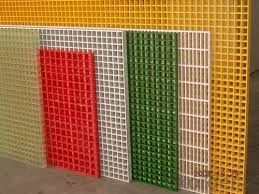
-
 Afrikaans
Afrikaans -
 Albanian
Albanian -
 Amharic
Amharic -
 Arabic
Arabic -
 Armenian
Armenian -
 Azerbaijani
Azerbaijani -
 Basque
Basque -
 Belarusian
Belarusian -
 Bengali
Bengali -
 Bosnian
Bosnian -
 Bulgarian
Bulgarian -
 Catalan
Catalan -
 Cebuano
Cebuano -
 China
China -
 China (Taiwan)
China (Taiwan) -
 Corsican
Corsican -
 Croatian
Croatian -
 Czech
Czech -
 Danish
Danish -
 Dutch
Dutch -
 English
English -
 Esperanto
Esperanto -
 Estonian
Estonian -
 Finnish
Finnish -
 French
French -
 Frisian
Frisian -
 Galician
Galician -
 Georgian
Georgian -
 German
German -
 Greek
Greek -
 Gujarati
Gujarati -
 Haitian Creole
Haitian Creole -
 hausa
hausa -
 hawaiian
hawaiian -
 Hebrew
Hebrew -
 Hindi
Hindi -
 Miao
Miao -
 Hungarian
Hungarian -
 Icelandic
Icelandic -
 igbo
igbo -
 Indonesian
Indonesian -
 irish
irish -
 Italian
Italian -
 Japanese
Japanese -
 Javanese
Javanese -
 Kannada
Kannada -
 kazakh
kazakh -
 Khmer
Khmer -
 Rwandese
Rwandese -
 Korean
Korean -
 Kurdish
Kurdish -
 Kyrgyz
Kyrgyz -
 Lao
Lao -
 Latin
Latin -
 Latvian
Latvian -
 Lithuanian
Lithuanian -
 Luxembourgish
Luxembourgish -
 Macedonian
Macedonian -
 Malgashi
Malgashi -
 Malay
Malay -
 Malayalam
Malayalam -
 Maltese
Maltese -
 Maori
Maori -
 Marathi
Marathi -
 Mongolian
Mongolian -
 Myanmar
Myanmar -
 Nepali
Nepali -
 Norwegian
Norwegian -
 Norwegian
Norwegian -
 Occitan
Occitan -
 Pashto
Pashto -
 Persian
Persian -
 Polish
Polish -
 Portuguese
Portuguese -
 Punjabi
Punjabi -
 Romanian
Romanian -
 Russian
Russian -
 Samoan
Samoan -
 Scottish Gaelic
Scottish Gaelic -
 Serbian
Serbian -
 Sesotho
Sesotho -
 Shona
Shona -
 Sindhi
Sindhi -
 Sinhala
Sinhala -
 Slovak
Slovak -
 Slovenian
Slovenian -
 Somali
Somali -
 Spanish
Spanish -
 Sundanese
Sundanese -
 Swahili
Swahili -
 Swedish
Swedish -
 Tagalog
Tagalog -
 Tajik
Tajik -
 Tamil
Tamil -
 Tatar
Tatar -
 Telugu
Telugu -
 Thai
Thai -
 Turkish
Turkish -
 Turkmen
Turkmen -
 Ukrainian
Ukrainian -
 Urdu
Urdu -
 Uighur
Uighur -
 Uzbek
Uzbek -
 Vietnamese
Vietnamese -
 Welsh
Welsh -
 Bantu
Bantu -
 Yiddish
Yiddish -
 Yoruba
Yoruba -
 Zulu
Zulu
Innovative Solutions for PP FRP Tank Design and Applications in Various Industries
Understanding PP FRP Tanks A Comprehensive Overview
In today's world, efficient and sustainable storage solutions are becoming increasingly critical across various industries. One such innovative solution is the PP (Polypropylene) FRP (Fiberglass Reinforced Plastic) tank. These tanks have garnered attention for their unique properties, versatility, and the advantages they offer over traditional storage options. In this article, we will explore what PP FRP tanks are, their applications, and the reasons behind their growing popularity.
What are PP FRP Tanks?
PP FRP tanks are composite storage vessels made from a combination of polypropylene and fiberglass materials. Polypropylene is a thermoplastic polymer known for its resistance to chemicals, durability, and lightweight properties. Fiberglass, on the other hand, enhances the mechanical strength and structural integrity of the tank, making it suitable for various applications.
The manufacturing process typically involves the fusion of polypropylene resin with fiberglass, resulting in a strong and corrosion-resistant tank. This combination allows for a product that can withstand harsh environments, including various chemical compositions and temperature variations.
Applications of PP FRP Tanks
1. Chemical Storage One of the primary applications of PP FRP tanks is in the chemical industry. Due to their excellent chemical resistance, they are widely used for storing acids, alkalis, and other corrosive substances. These tanks prevent leakage and contamination, ensuring safety and compliance with environmental regulations.
2. Water Treatment In water treatment facilities, PP FRP tanks are utilized for both the storage and processing of water. Their resistance to corrosion and degradation ensures that the water remains uncontaminated, making them ideal for applications such as filtration, disinfection, and chemical dosing.
3. Agriculture The agricultural sector also benefits from PP FRP tanks, especially for storing fertilizers and pesticides. These tanks help in minimizing environmental impact and ensuring that agricultural chemicals are safely stored until needed.
4. Food and Beverage Industry In the food industry, maintaining hygiene is paramount. PP FRP tanks can be designed to meet stringent health regulations, allowing for the safe storage of various food products, including liquids and ingredients.
pp frp tank

Advantages of PP FRP Tanks
PP FRP tanks offer numerous benefits that contribute to their rising popularity
- Corrosion Resistance Their ability to withstand corrosion from various chemicals and external conditions ensures longevity and reduces the need for replacements.
- Lightweight Compared to traditional materials like steel or concrete, PP FRP tanks are much lighter, making them easier to transport and install.
- Cost-Effective While the initial investment might be higher than some options, the long-term savings from maintenance, durability, and replacement costs make them a more economical choice over time.
- Versatility These tanks can be manufactured in a variety of shapes and sizes, tailored to meet specific storage needs, whether for residential, commercial, or industrial use.
- Environmental Impact As an eco-friendly storage solution, PP FRP tanks help in reducing the ecological footprint associated with traditional storage methods, promoting sustainability in various sectors.
Conclusion
As industries continue to seek more efficient and environmentally friendly solutions, PP FRP tanks stand out as a reliable option for a range of applications. With their durability, chemical resistance, and versatility, they represent a forward-thinking approach to storage solutions that cater to the needs of the modern world. As technology advances and the demand for safe and sustainable storage increases, PP FRP tanks are likely to become an integral part of various industrial processes moving forward.









